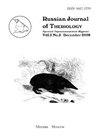Fifty years after introduction: muskrat Ondatra zibethicus population of Khar-Us Lake, Western Mongolia
IF 0.6
4区 生物学
Q4 ZOOLOGY
引用次数: 5
Abstract
The first release of the muskrat (Ondatra zibethicus) in the ecosystem of Khar-Us Lake, Western Mongolia, commenced in 1967. A total of 415 individuals were introduced into this watershed until the early 1980’s. Subsequently, the distribution of muskrats has expanded exponentially throughout the wetlands of Khar-Us Lake. For example, they are distributed along the Khovd River, the Khovd River mouth, the Dalai Lake and the islands of the Tsagaan River. These habitats are under threat of degradation due to the activities of both humans and domestic animals. The current population of mature muskrats in the Khar-Us Lake is approximately 80,000 individuals. This increased population has had numerous impacts on these ecosystems, suggesting that some measure of control must be established to ensure the population remains sustainable while the ecosystems remain intact. In situations such as this, where an invasive species is inflicting tangible damage to an ecosystem, sustainable harvesting can be necessary for the purpose of regulating their impact. The sustainable hunting of muskrats for their fur is however beneficial to the development of the local economy which in turn strengthens the management plan for the National Park of “Khar-Us Lake”. How to cite this article: Otgonbaatar M., Shar S., Saveljev A.P. 2018. Fifty years after introduction: muskrat Ondatra zibethicus population of Khar-Us Lake, Western Mongolia // Russian J. Theriol. Vol.17. No.1. P.32–38. doi: 10.15298/rusjtheriol.17.1.03引进50年后:蒙古西部喀喇昆仑湖的毛鼠种群
1967年,在蒙古西部的喀鲁湖生态系统中首次放生了麝鼠。直到20世纪80年代初,共有415只个体被引入该流域。随后,麝鼠的分布在整个卡鲁斯湖湿地呈指数级增长。例如,它们分布在科布多河、科布多河口、达赖湖和察干河的岛屿上。由于人类和家畜的活动,这些栖息地正面临退化的威胁。Khar Us湖目前的成年麝鼠种群约为80000只。人口的增加对这些生态系统产生了许多影响,这表明必须制定一些控制措施,以确保人口保持可持续性,同时生态系统保持完整。在这种情况下,入侵物种正在对生态系统造成有形损害,为了调节其影响,可持续的收获可能是必要的。然而,对麝鼠进行可持续狩猎以获取其皮毛有利于当地经济的发展,这反过来又加强了“哈尔乌斯湖”国家公园的管理计划。如何引用这篇文章:Otgonbaatar M.,Shar S.,Saveljev A.P.2018。引进50年后:蒙古西部喀喇昆仑湖的麝鼠种群//俄罗斯J.Theriol。第17卷第1期。P.32-38.doi:10.15298/rusjtheriol.7.1.03
本文章由计算机程序翻译,如有差异,请以英文原文为准。
求助全文
约1分钟内获得全文
求助全文
来源期刊

Russian Journal of Theriology
Agricultural and Biological Sciences-Animal Science and Zoology
CiteScore
0.90
自引率
33.30%
发文量
0
期刊介绍:
The Russian Journal of Theriology publishes papers on all aspects of mammalian biology: taxonomy, zoogeography, ecology, behavior, morphology, development, physiology, paleontology, and evolution. Studies of extinct as well as extant taxa are included. Reviews are also published; these may be invited by the Editorial Board.
 求助内容:
求助内容: 应助结果提醒方式:
应助结果提醒方式:


